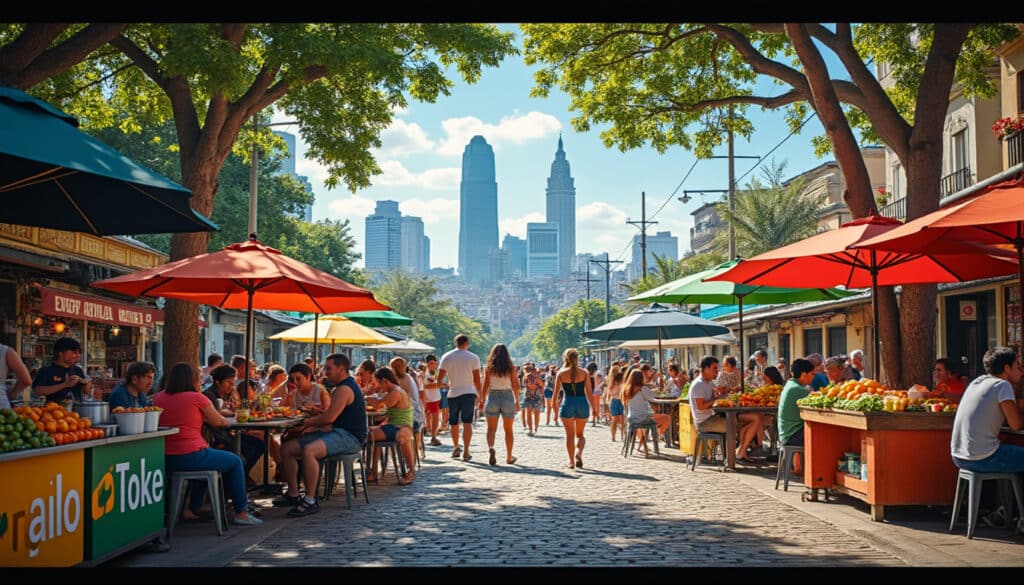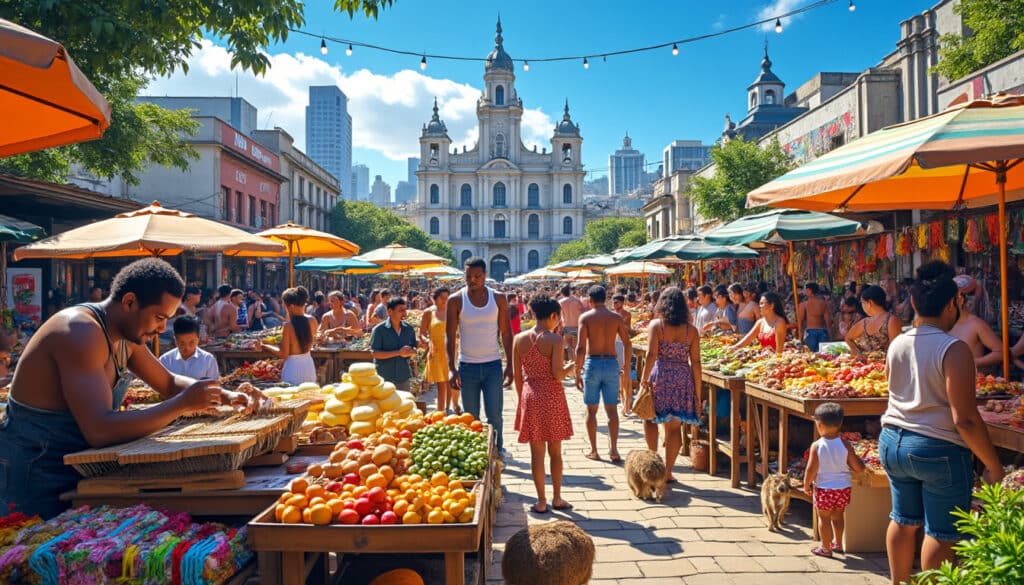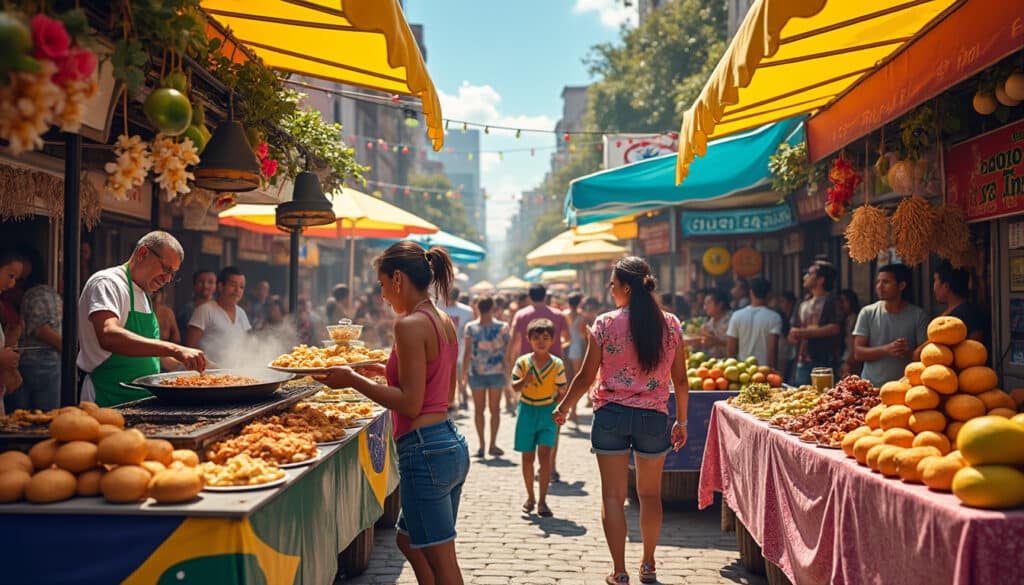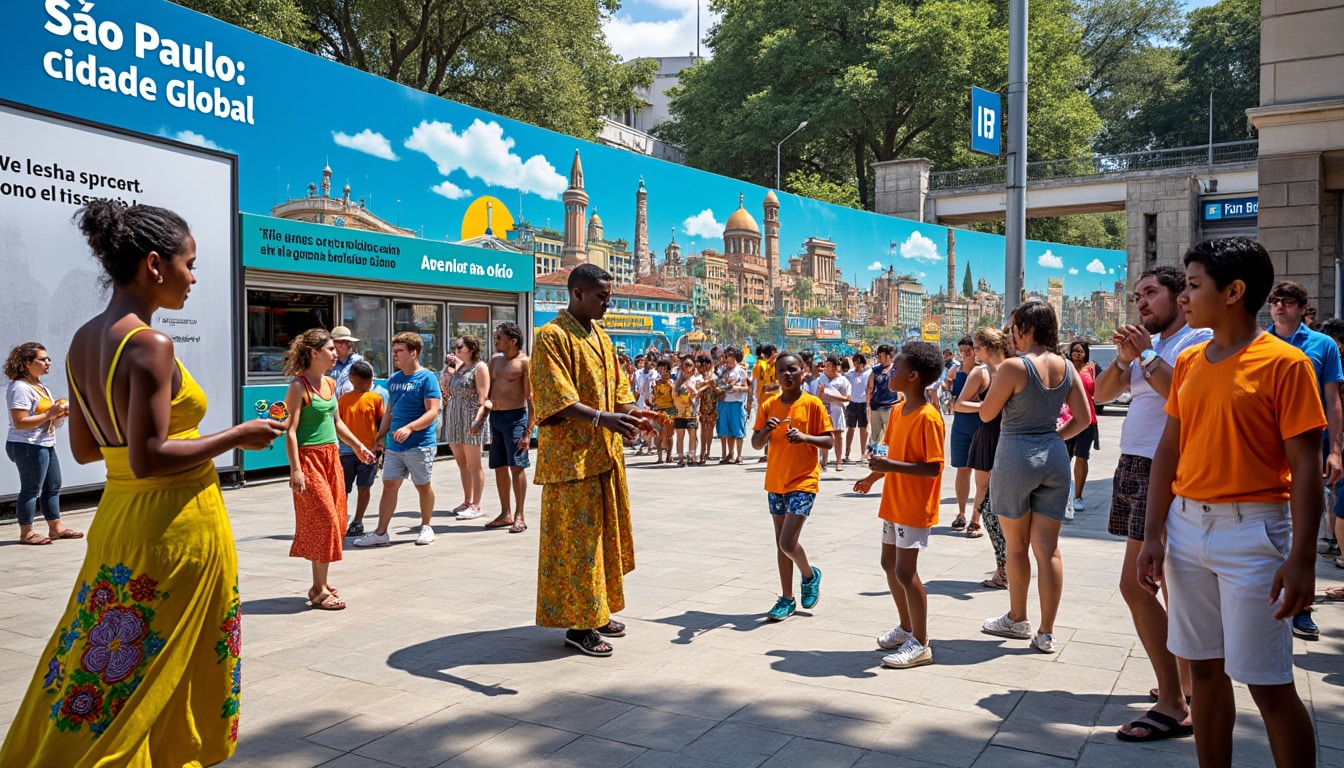São Paulo, a vibrant metropolis pulsating with life and energy, is not just the financial hub of Brazil but also a melting pot of cultures and languages. With its bustling streets and towering skyscrapers, this city is home to a fascinating tapestry of languages that reflect its rich history and diverse population. From the official language, Portuguese, to the multitude of immigrant and indigenous languages, the linguistic landscape of São Paulo provides a captivating glimpse into the city’s soul. In exploring the languages spoken here, one can uncover layers of cultural influences that have shaped this sprawling urban giant.
Portuguese: The Heartbeat of São Paulo
At the core of São Paulo’s linguistic tapestry is Portuguese, the official language of Brazil and the most widely spoken in the city. Introduced by Portuguese explorers in 1500, the language has evolved significantly over the centuries, distinguishing itself from its European counterpart. Today, São Paulo, as the world’s largest Portuguese-speaking city, embodies this linguistic evolution, which is enriched by African and indigenous influences.
The significance of Portuguese in São Paulo cannot be overstated, as it is the primary language of communication across all facets of daily life, including business, education, and media. This prevalence has fostered a cohesive environment that unites São Paulo’s diverse inhabitants under a common linguistic umbrella. While regional dialects are diminishing due to modern media’s pervasive influence, distinct features of Paulista Portuguese, the local dialect, can still be discerned. These include unique pronunciation patterns and vocabulary that offer a nod to the city’s Italian and indigenous heritage.
- Portuguese: Main language spoken by over 99% of São Paulo’s population ✅
- Key for business, education, and media
- Influences from African and indigenous languages
- Distinct Paulista accent with Italian and indigenous influences
Portuguese continues to be the foundation upon which other languages are woven into the city’s fabric. It is imperative for anyone visiting or moving to São Paulo to have a good grasp of Portuguese. Language learning platforms like Rosetta Stone, Babbel, and Duolingo offer accessible ways to start learning Portuguese, enabling smoother navigation of the city’s dynamic environment.

The Influence of Spanish and Pidgin Variants
Despite the prevalent use of Portuguese, Spanish also finds a place in São Paulo’s linguistic landscape. Due to geographical proximity and historical ties, Spanish has been present in Brazil, though its influence in São Paulo is less pronounced than one might expect. Meanwhile, Portuñol, a pidgin mix of Portuguese and Spanish, emerges in regions near Spanish-speaking borders, highlighting the fluid linguistic exchanges at play.
Up until recently, Spanish was seen as a secondary or tertiary language in Brazil, overshadowed by the national desire to maintain a distinct identity. However, an increasing number of Brazilians are now embracing Spanish as a useful second language, especially given the rise of cross-border trade and tourism. Educational institutions and language apps like Busuu, Memrise, and Pimsleur see a growing demand for Spanish, reflecting its practical benefits.
- Spanish speakers in Brazil: approximately 460,000 🇪🇸
- Portuñol: Mix of Portuguese and Spanish used in border regions
- Rising interest in learning Spanish due to trade and tourism
Despite its secondary status, the presence of Spanish underscores São Paulo’s openness to linguistic exchange. This openness is also evident in the city’s numerous language schools offering Spanish courses to students eager to enhance their international communication skills.
Language Table: Portuguese vs Spanish in São Paulo
| Language 🌍 | Number of Speakers 📊 | Usage in Daily Life 💬 |
|---|---|---|
| Portuguese | 99% of population | Business, education, media |
| Spanish | 460,000 speakers | Primarily in border regions, education |
Immigrant Languages: A Mosaic of Sounds
São Paulo’s role as a major immigrant city is a prominent factor in its linguistic diversity. With communities from Italy, Japan, Germany, and Lebanon among others, São Paulo’s immigrant population has introduced and preserved a multitude of languages within its neighborhoods. This mosaic of sounds highlights the city’s global connectivity and ethnic richness.
The Italian influence, particularly, has left a lasting mark on the city’s culture and language. Italian immigrants have introduced dialects such as Talian, a Venetian dialect, enriching São Paulo’s linguistic palette. Similarly, the German language thrives in certain districts, where dialects like Hunsrückisch and Pomerano are still spoken.
- Italian: Talian dialects widely spoken by descendants 🇮🇹
- German: Hunsrückisch and Pomerano dialects prevalent 🇩🇪
- Japanese, Korean, and Arabic communities add to diversity 🇯🇵🇰🇷🇱🇧
Japanese, one of the more notable languages due to São Paulo hosting the largest Japanese diaspora outside Japan, plays a significant role. Language apps like HelloTalk and FluentU facilitate exchange and learning among these communities, reflecting their linguistic endurance and adaptation.
Languages and Communities in São Paulo
| Language 🗣️ | Community 🇨🇴 | Notable Areas 🗺️ |
|---|---|---|
| Italian | Italian Brazilians | Bela Vista, Mooca |
| German | German Brazilians | Campos do Jordão |
| Japanese | Japanese Brazilians | Liberdade |
Indigenous Languages: Echoes of Ancestral Roots
Indigenous languages, while not as prevalent in São Paulo as Portuguese or immigrant languages, hold a special place in Brazil’s linguistic heritage. Despite the tragic decline in the number of speakers due to historical and cultural shifts, these languages remain vital components of Brazil’s identity.
The Tupi and Jê linguistic families are the most significant, with languages like Guarani and Nheengatu still spoken by indigenous communities within and around São Paulo. These languages represent cultural resilience and are pivotal in understanding the pre-colonial history of the region.
- Languages: Guarani and Nheengatu among others 🌿
- Continued efforts to preserve these languages 🔄
- Reflect ancestral stories and connections 📜
Efforts to preserve indigenous languages are supported by linguists and educators who emphasize their importance in cultural identity. Initiatives and platforms like iTalki and Lingoda work towards celebrating linguistic diversity, advocating for these languages through education and sustenance.
Indigenous Languages in São Paulo and Brazil
| Language 🌍 | Speaker Numbers 📊 | Preservation Efforts 💪 |
|---|---|---|
| Guarani | Native communities | Cultural education programs |
| Nheengatu | Approximately 19,000 | Language revitalization projects |
Modern Language Tools in São Paulo
In an era where technology permeates every aspect of life, language learning and communication in São Paulo are no exceptions. The rise of mobile applications and digital platforms has democratized access to language education, providing resources affordable and adaptable to São Paulo’s diverse populace.
Platform options abound, from Rosetta Stone and Duolingo, perfect for beginners, to advanced conversational practice on platforms like iTalki. These tools help both residents and visitors bridge language gaps, fostering a more inclusive and communicative urban setting.
- Rosetta Stone: Ideal for foundational learning 📚
- iTalki: Connects learners with native speakers globally 🌐
- Lingoda and FluentU: Cater to advanced learning needs 🎓
The fusion of traditional languages with modern learning solutions not only enhances communication but also enriches the cultural dialogue between São Paulo’s myriad communities. These resources ensure the city’s residents and international friends can feel at home, no matter their native tongue.
Frequently Asked Questions (FAQ)
-
What is the main language spoken in São Paulo?
The main language spoken in São Paulo is Portuguese, which is also the official language of Brazil.
-
Are there many Spanish speakers in São Paulo?
While Spanish is spoken, it is not as prevalent as Portuguese. Around 460,000 people speak Spanish in Brazil, with a growing interest in the language.
-
What immigrant languages are commonly spoken?
São Paulo hosts a variety of languages due to its immigrant communities, including Italian, German, and Japanese.
-
How are indigenous languages preserved in Brazil?
Efforts include educational programs and language revitalization projects focusing on languages such as Guarani and Nheengatu.
-
What tools are available for learning Portuguese in São Paulo?
Language learning platforms like Rosetta Stone, Duolingo, and iTalki offer great resources for learning Portuguese in São Paulo.

Culture & Local Life in Sao Paulo
São Paulo, the colossal metropolis of Brazil, is a dynamic blend of cultures, styles, and histories, creating an eclectic atmosphere that is both captivating and challenging. With a population surpassing 12 million, this urban giant is not just a financial…

Best places to eat in Sao Paulo
São Paulo, vividly alive and endlessly intricate, is a gastronomic cornerstone within Brazil, often overshadowed by its vibrant neighbor, Rio de Janeiro. Yet, for those willing to explore its bustling avenues and cozy nooks, the city offers a culinary journey…

The dynamic culinary landscape of São Paulo is a reflection of its rich cultural tapestry and diverse population. Within this bustling metropolis, meal times are not just about sustenance; they are a celebration of the myriad flavors that converge here.…

Souvenirs and shopping in Sao Paulo
São Paulo, a city pulsating with energy and life, offers a shopping experience that is as diverse and vibrant as its cultural landscape. As the largest metropolis in Brazil, it’s a place where urban sophistication meets rich traditions and cultural…

What do people eat in Sao Paulo?
São Paulo, Brazil’s bustling metropolis, is a kaleidoscope of cultural diversity manifested through its vibrant culinary scene. Known as the melting pot of South America, the city embraces a rich tapestry of flavors brought forth by waves of immigrants including…


